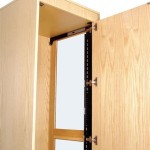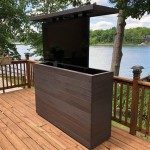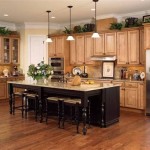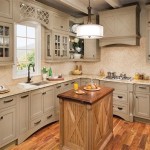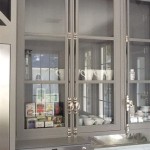Is It Necessary To Prime Kitchen Cabinets Before Painting?
Painting kitchen cabinets is a popular way to refresh the look of a kitchen without the expense of a full remodel. However, achieving a professional and durable finish extends beyond simply applying a coat of paint. A crucial, yet often debated, step is priming. Understanding whether or not to prime kitchen cabinets before painting is essential for ensuring the longevity and aesthetic quality of the painted surface.
Priming serves several functions that contribute to a better final result. It prepares the surface to effectively receive the paint, promotes adhesion, blocks stains, and creates a uniform base for the finish coat. The necessity of these functions depends on the existing cabinet material, its condition, and the type of paint being used. Therefore, a thorough assessment of the cabinets is the first step in determining whether priming is essential.
Priming Enhances Paint Adhesion
One of the primary reasons for priming is to improve paint adhesion. Many kitchen cabinets are made of materials, such as laminate, melamine, or previously finished wood, that are inherently smooth and non-porous. Paint struggles to adhere properly to these surfaces, potentially leading to chipping, peeling, and an overall lack of durability. Primer, formulated with adhesive properties, creates a bonding layer between the cabinet surface and the paint.
The chemical composition of primer allows it to penetrate slightly into the existing surface, roughening it at a microscopic level. This creates a textured profile that provides a "key" for the paint to grip onto. Without this key, even the highest-quality paints are likely to fail over time, especially in the high-use environment of a kitchen.
Furthermore, the smooth, often shiny surfaces of many cabinet materials resist paint absorption. Primer, being more porous, allows the paint to properly absorb, leading to a more even and consistent finish. This is particularly important for achieving a uniform color and sheen across the entire cabinet surface.
Different types of primers offer varying levels of adhesion. Oil-based primers are known for their excellent bonding capabilities, particularly on glossy or hard-to-adhere surfaces. Latex primers are a good choice for drywall and other porous surfaces, offering ease of application and cleanup. Specialty primers, like bonding primers, are specifically designed for challenging surfaces like laminate and melamine.
The preparation process preceding priming also plays a role in adhesion. Cleaning the cabinets thoroughly with a degreaser and lightly sanding them to create a slightly rougher surface are essential steps. These steps remove any dirt, grease, or existing coatings that could interfere with the primer's ability to bond effectively.
Priming Blocks Stains and Prevents Bleed-Through
Another significant benefit of priming is its ability to block stains and prevent bleed-through. Kitchen cabinets are often exposed to grease, cooking splatters, and other substances that can penetrate the existing finish and cause discoloration. These stains can bleed through subsequent layers of paint, ruining the desired aesthetic and requiring additional coats of paint to conceal.
Primers create a barrier between the stained surface and the fresh paint. This barrier prevents the stains from migrating through the paint and altering its color or appearance. Oil-based primers are particularly effective at stain blocking due to their dense composition. However, some latex primers are specifically formulated with stain-blocking properties and can provide adequate protection.
Certain types of wood, such as cherry and mahogany, contain tannins that can leach through paint, causing discoloration. This is especially problematic when painting these woods in lighter colors. Primer acts as a sealant, preventing the tannins from reaching the paint layer and ensuring a true color representation.
The severity of the staining will determine the type of primer needed. For minor stains, a standard latex primer may suffice. However, for more stubborn or extensive stains, an oil-based or shellac-based primer is recommended. Shellac-based primers are particularly effective at blocking severe stains, such as water damage or smoke damage.
In cases where significant staining is present, multiple coats of primer may be necessary to completely block the stains. It is crucial to allow each coat of primer to dry thoroughly before applying the next to maximize its stain-blocking capabilities.
Priming Creates a Uniform Surface for Paint Application
Achieving a smooth and even paint finish requires a uniform surface. Kitchen cabinets often have variations in color, texture, and porosity, especially if they are made from a combination of materials or have undergone repairs. These variations can lead to uneven paint absorption and a patchy, unprofessional-looking finish.
Priming helps to create a uniform surface by filling in minor imperfections and neutralizing color differences. The primer evens out the porosity of the surface, ensuring that the paint absorbs at the same rate across the entire cabinet. This results in a more consistent color and sheen, regardless of the underlying material.
Primers are available in different tints, which can be used to further enhance the uniformity of the surface. Tinting the primer closer to the desired paint color can reduce the number of paint coats required to achieve full coverage. This is particularly beneficial when painting cabinets in bold or dark colors.
For cabinets with visible wood grain, primer can help to minimize the appearance of the grain, creating a smoother surface for painting. This is especially important if a high-gloss finish is desired, as the gloss will accentuate any imperfections in the surface.
Furthermore, primer can help to conceal repairs, such as filled nail holes or patched areas. The primer fills in these imperfections, creating a seamless surface that blends in with the surrounding area. This ensures that the repaired areas are not noticeable once the paint is applied.
The application technique also contributes to a uniform surface. Applying the primer in thin, even coats, using a high-quality brush or roller, is essential. Avoid applying too much primer at once, as this can lead to drips and runs.
In conclusion, the necessity of priming kitchen cabinets before painting hinges on a number of factors including, the existing cabinet material, the presence of stains or imperfections, and the desired finish. While omitting this step might seem like a way to save time and money, the long-term benefits of priming, such as improved adhesion, stain blocking, and surface uniformity, often outweigh the initial investment. A careful assessment of the cabinets and the intended paint finish will determine whether priming is a crucial component of achieving a professional and lasting result.

Refinish Kitchen Cabinets With Kilz Restoration Primer

What You Need To Know Before Painting Cabinets The Palette Muse

How To Paint Kitchen Cabinets A Step By Guide Confessions Of Serial Do It Yourselfer

Do I Need A Primer For Kitchen Cabinets 518 Painters

Painting Kitchen Cabinets Without Primer

How To Prime Cabinets For A Smooth Finish The Turquoise Home

How To Clean Prep Wood Kitchen Cabinets Before Painting Do Dodson Designs

A Year In Review Of How I Painted My Laminate Cabinets With Two Methods

How To Paint Kitchen Cabinets A Step By Guide Confessions Of Serial Do It Yourselfer

How To Paint Kitchen Cabinets Without Sanding Or Priming
Related Posts

